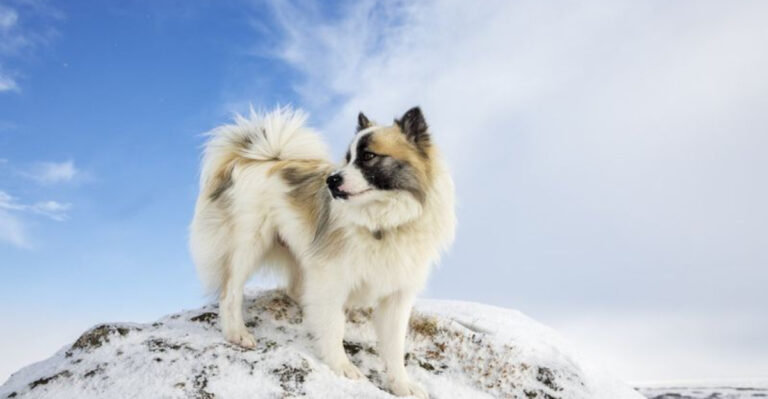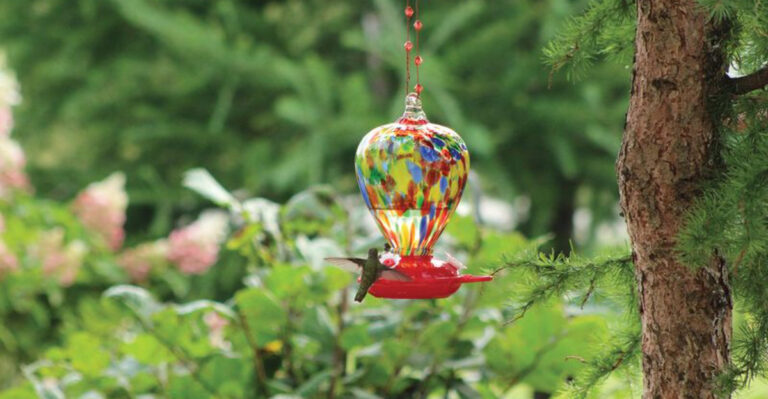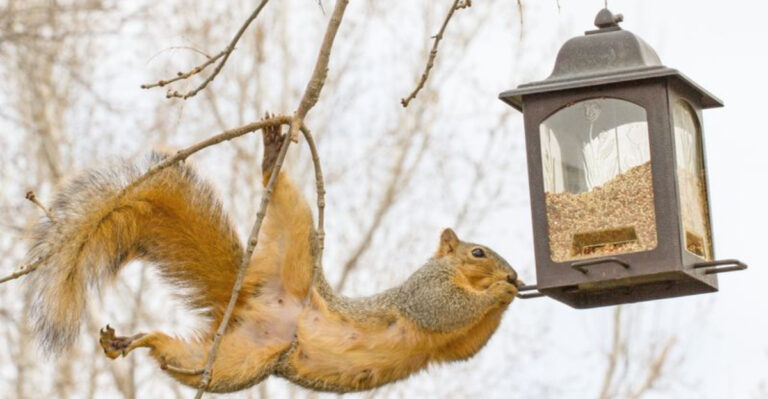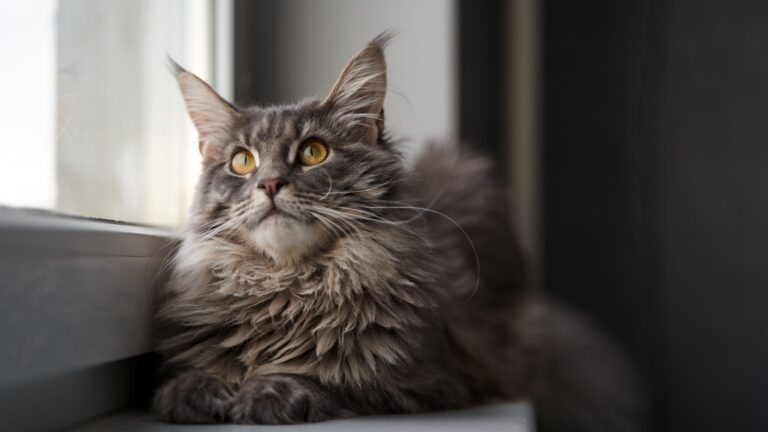12 Stunning Animals That Are Masters At Hiding
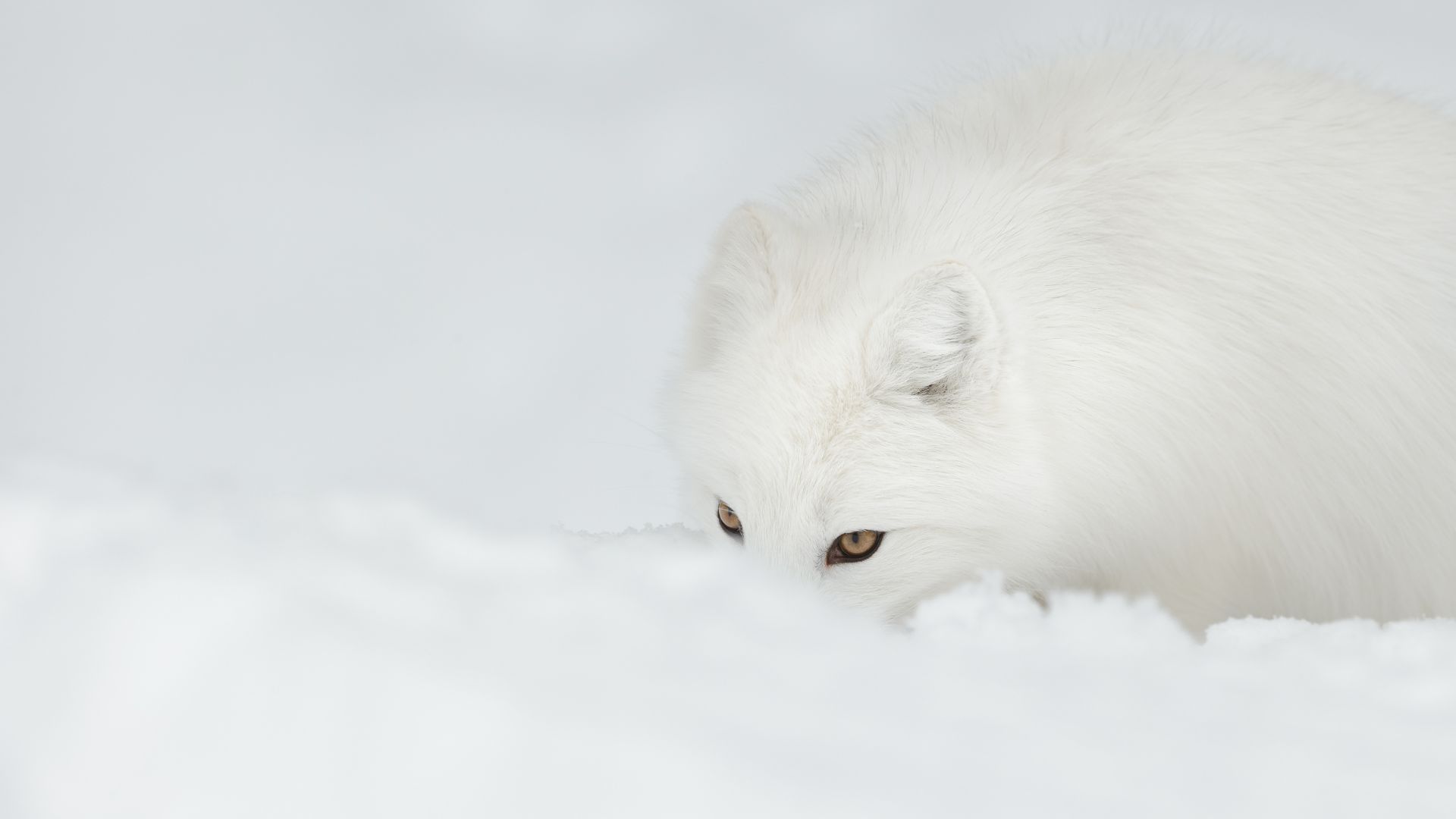
Nature is full of surprises, and among its greatest marvels are the animals that possess the incredible ability to disappear into their surroundings.
These masters of disguise have evolved to blend seamlessly with their habitats, offering them protection from predators and the perfect opportunity to sneak up on prey.
In this post, we’ll explore 12 stunning animals that are true experts in the art of hiding.
1. Leaf-Tailed Gecko
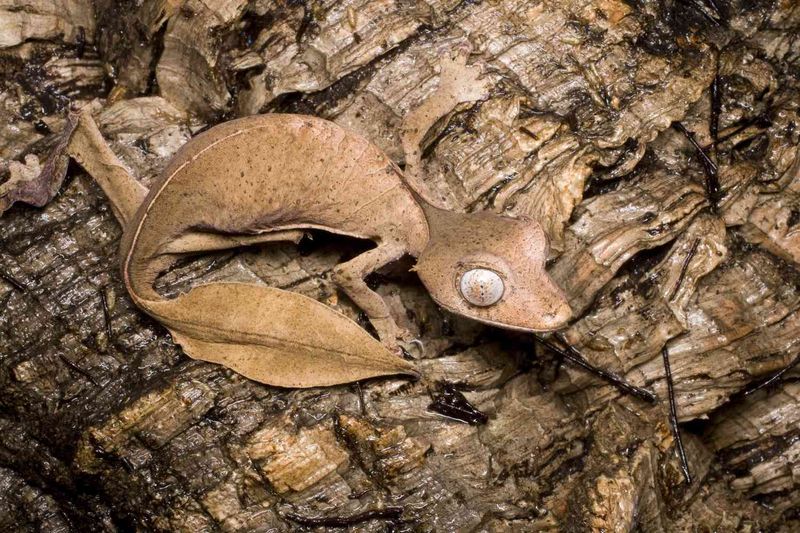
The leaf-tailed gecko is a spectacular example of nature’s artistry. Native to Madagascar, this gecko’s unique appearance allows it to blend perfectly with the forest environment.
Its body mimics the texture and color of tree bark, complete with vein-like lines that resemble leaves. This natural camouflage serves as an effective defense mechanism against predators, making it nearly invisible.
Its broad, flat tail looks like a dried leaf, enhancing its ability to hide among the foliage. The gecko’s ability to stick to surfaces helps it stay motionless, adding to its illusion of being part of the vegetation. This adaptation helps the gecko both in evading predators and in ambushing prey.
Interestingly, the leaf-tailed gecko is nocturnal and becomes even harder to spot during the night. It’s not just the physical appearance that aids in its disguise; the gecko’s behavior complements its looks.
By remaining motionless and choosing the right background, it becomes a phantom in the forest. Truly, the leaf-tailed gecko is a masterpiece of evolutionary design, showcasing how life can adapt to survive in the wild.
2. Pygmy Seahorse
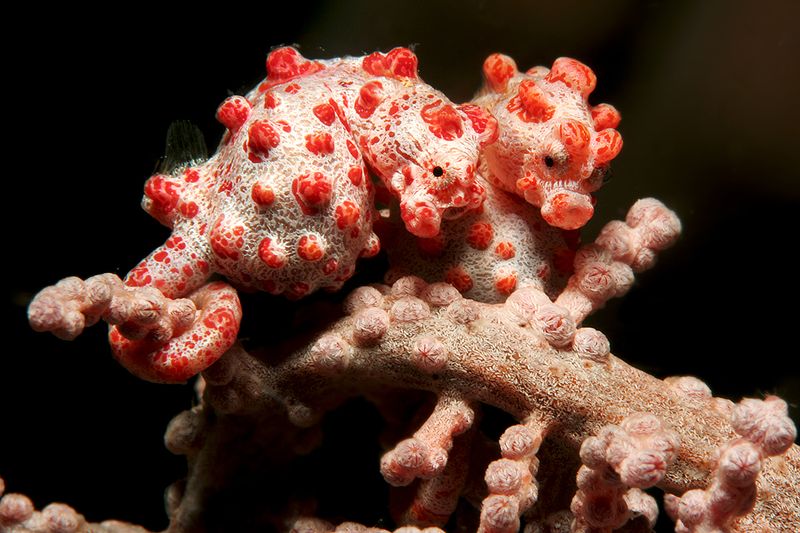
The pygmy seahorse is a tiny yet extraordinary creature, renowned for its exceptional ability to blend in with its surroundings. Found in the vibrant coral reefs of the Pacific Ocean, these minute seahorses are masters at mirroring the colors and textures of the sea fan corals they inhabit.
This remarkable camouflage not only helps them hide from predators but also makes them almost invisible to humans. With their knobby bodies and tiny size – often less than an inch long – they resemble the coral branches they cling to.
The pygmy seahorse’s colors range from bright pink to orange, matching the hues of the host corals. Their ability to change color as needed to fully integrate with their environment is a testament to their adaptability.
This camouflaging expertise is crucial for their survival, as it helps them evade predators and hunt for plankton undisturbed.
The pygmy seahorse’s life is a delicate dance of blending in and standing out just enough to find food without being found themselves. It’s a fascinating example of nature’s ingenuity at work.
3. Mimic Octopus
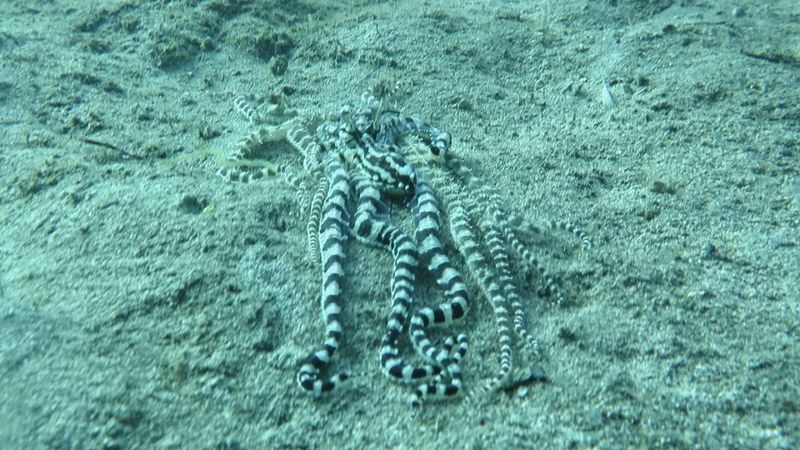
The mimic octopus is a fascinating marine creature known for its extraordinary ability to impersonate other animals. Found in the tropical waters of Southeast Asia, especially Indonesia, this octopus has taken camouflage to an entirely new level.
Unlike most animals that blend with their environment, the mimic octopus takes on the appearance and behavior of different marine species. It can imitate up to 15 different animals, including lionfish, flatfish, and sea snakes.
By altering its color, shape, and movement, the mimic octopus can confuse predators and prey alike. This incredible adaptability allows it to avoid danger by pretending to be a more threatening creature.
The mimic octopus’s talent for mimicry extends beyond mere appearance. It can change its behavior to enhance its disguise, making it one of the most versatile tricksters in the ocean.
This clever strategy not only helps it in defense but also aids in hunting, as it can approach unsuspecting prey by appearing as a non-threatening species.
The mimic octopus is a true testament to the ingenuity and versatility found in the marine world.
4. Stonefish
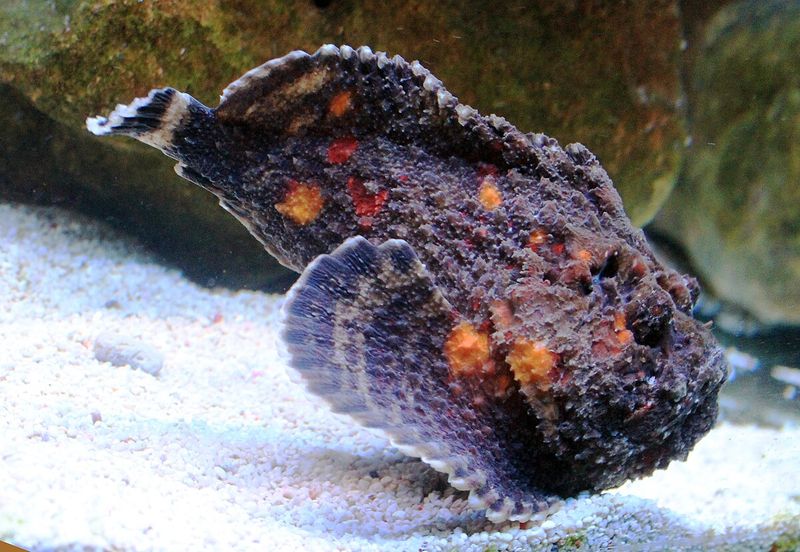
The stonefish is one of the ocean’s most proficient masters of disguise. Found primarily in the waters of the Indo-Pacific, including the Great Barrier Reef, this venomous fish is often mistaken for a rock or a piece of coral due to its appearance.
Its rough, textured skin, covered in warty, spiny protuberances, mimics the surrounding sea floor perfectly. This camouflage is vital for both defense and predation. By blending in with the rocky seabed, the stonefish can ambush unsuspecting prey while staying hidden from potential threats.
Apart from its camouflage, the stonefish is equipped with venomous spines, making it one of the most dangerous fish in the ocean. This lethal combination of disguise and defense mechanisms makes the stonefish a formidable presence in its habitat.
Its ability to remain motionless for long periods adds to its mysterious allure, illustrating how even the most unassuming creatures can possess remarkable survival strategies in the wild.
5. Arctic Fox
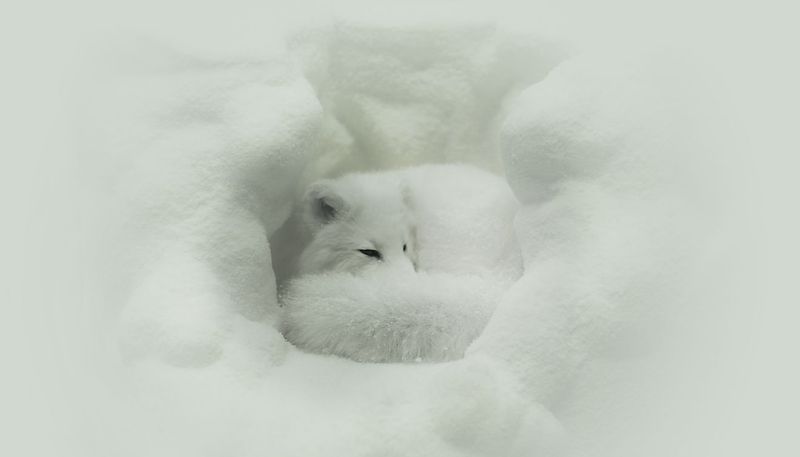
The Arctic fox is a stunning example of nature’s adaptability, thriving in the harsh and frigid environments of the Arctic. Its most notable feature is its fur, which changes color with the seasons.
During winter, the Arctic fox sports a thick, white coat that allows it to vanish into the snowy landscape, providing essential camouflage against predators and for hunting. In the summer, its coat transforms to a brown or grey color, matching the tundra’s rocky terrain and vegetation.
This seasonal transformation is crucial for survival, as it helps the fox remain inconspicuous in its dynamic environment. The Arctic fox’s ability to adapt its appearance according to the season is truly a marvel of evolution.
Apart from its camouflage, the Arctic fox is equipped with other adaptations like a keen sense of hearing and the ability to dig dens in the snow for shelter.
These skills are essential for finding food and protecting itself from freezing temperatures. The Arctic fox is a true survivor, illustrating the incredible ways animals evolve to fit their environments.
6. Malayan Krait
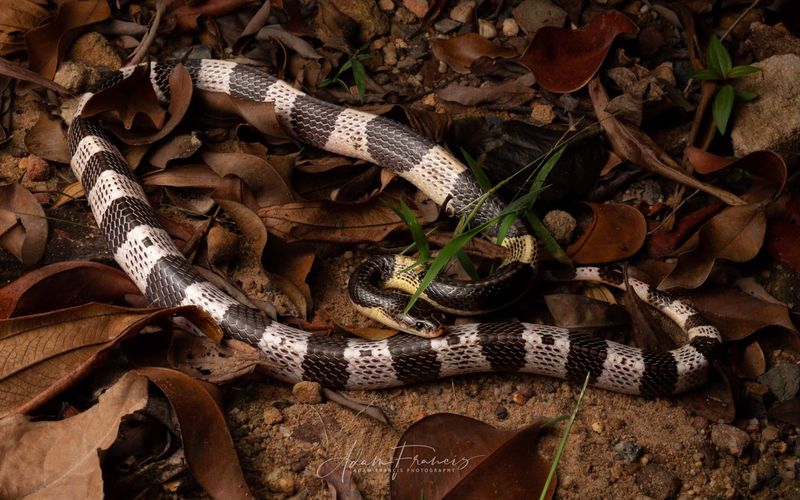
The Malayan krait is a venomous snake found in Southeast Asian forests, known for its effective camouflage. Its distinctive black and white bands help it to blend seamlessly with the dappled shadows of the forest floor.
This camouflage is a crucial survival tool, allowing the krait to hide from predators and approach its prey with stealth. The Malayan krait’s nocturnal nature further enhances its ability to disappear into the darkness, making it a very elusive snake.
Despite its fearsome reputation due to its potent venom, the Malayan krait is a shy creature, preferring to avoid conflict and stay hidden.
Its ability to blend with its surroundings exemplifies how animals have adapted to thrive in specific environments by using disguise as both a defensive and offensive strategy.
The Malayan krait is a testament to the intricate balance of predator and prey in the wild, where survival often hinges on the ability to remain unseen.
7. Common Baron Caterpillar
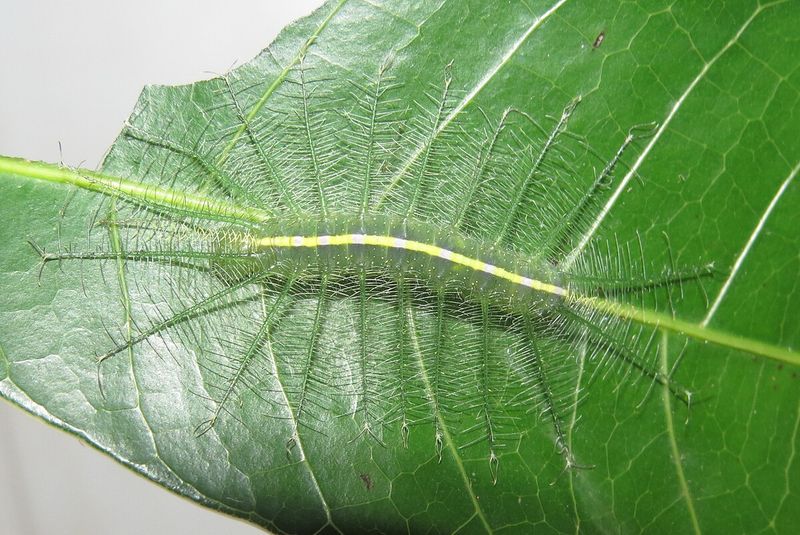
The common baron caterpillar is a master of camouflage, known for its ability to blend seamlessly with the leaves it feeds on. This caterpillar, found primarily in India and Southeast Asia, has evolved to mimic the appearance of mango leaves, its favorite food source.
Its green body is adorned with vein-like markings that match the texture and color of the leaf, rendering it nearly invisible to predators. This remarkable disguise is essential for its survival, as it allows the caterpillar to evade birds and other threats while it feeds.
The common baron caterpillar’s ability to blend in is a perfect example of how insects have adapted to their environments for protection. By becoming part of the foliage, it can continue its lifecycle uninterrupted.
This caterpillar’s transformation into a butterfly adds another layer of intrigue to its story, showing how creatures evolve and adapt in extraordinary ways to survive and thrive in their natural habitats.
8. Eastern Screech Owl
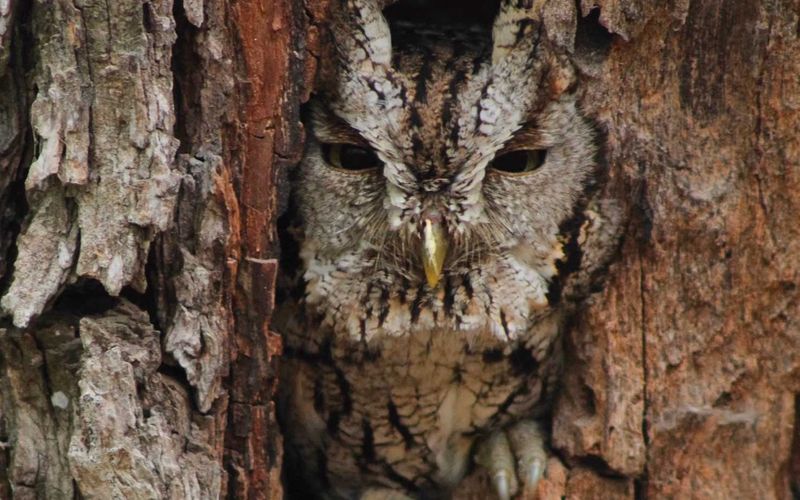
The eastern screech owl is a small owl native to North America, known for its impressive ability to camouflage in its woodland habitat. Its mottled feathers blend perfectly with the tree bark, making it extremely difficult to spot.
This camouflage is vital for both avoiding predators and hunting prey. The owl’s coloration allows it to perch invisibly during the day, resting and conserving energy for nighttime hunting.
Its ability to blend seamlessly with its environment is enhanced by its stillness, making it appear as part of the tree itself.
The eastern screech owl is also known for its distinctive trilling call, which adds to its mystique. This owl’s ability to disappear into its surroundings is a fascinating adaptation, showcasing how animals can evolve to thrive in their specific ecosystems.
The eastern screech owl is a perfect example of why you should never underestimate the power of nature’s disguises.
9. Leaf Insect
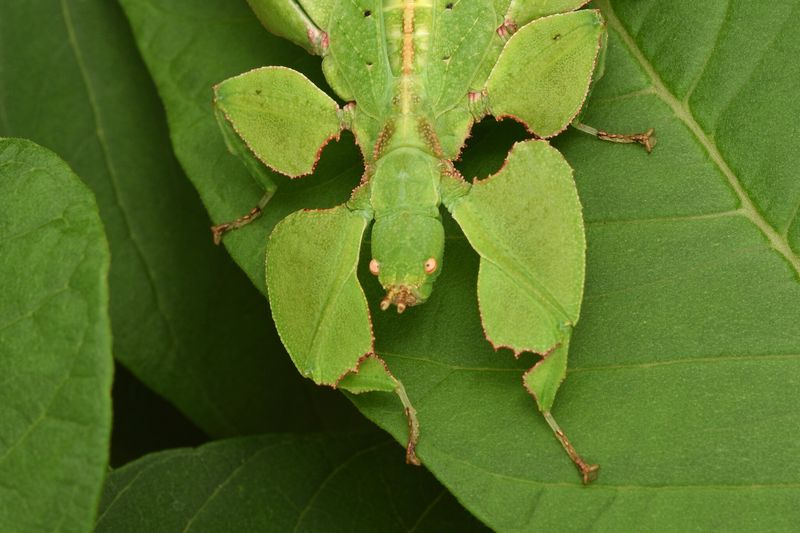
The leaf insect is a remarkable creature that truly embodies the art of camouflage. Found in the lush forests of Southeast Asia, this insect has evolved to look exactly like a leaf, with a body that mimics leaf veins and edges.
Its appearance is so convincing that it can easily fool predators into thinking it’s just another piece of foliage. This disguise is essential for its survival, allowing it to evade birds and other insect-eating creatures.
The leaf insect’s ability to sway gently in the breeze like a real leaf adds to the illusion, making it even harder to detect.
This mesmerizing adaptation is a testament to the wonders of evolution, where survival can depend on one’s ability to blend in seamlessly with the environment. The leaf insect is a beautiful example of how nature’s artistry can lead to incredible adaptations.
10. Cuttlefish
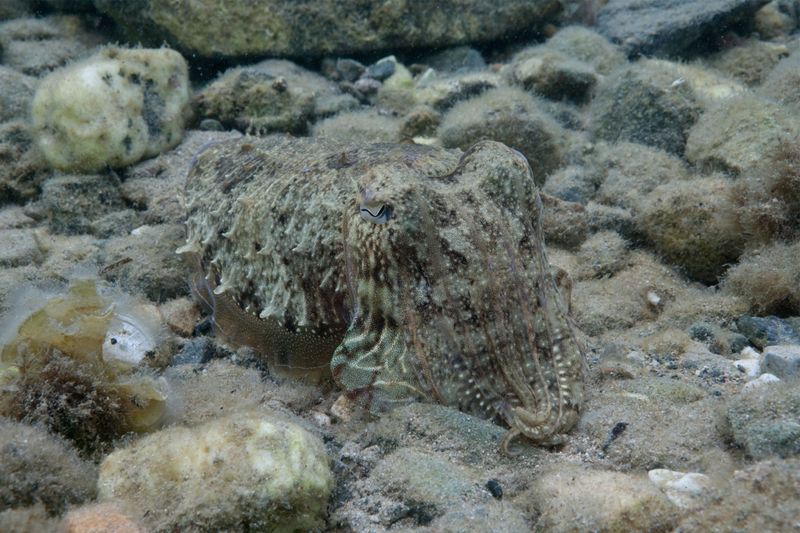
The cuttlefish is a marine marvel known for its dynamic camouflage abilities, allowing it to blend into the ocean environment with astonishing precision.
Found in oceans worldwide, this cephalopod can change its color, pattern, and texture in an instant, making it one of the most versatile camouflagers in the animal kingdom.
Its skin contains specialized cells called chromatophores, which expand and contract to create a wide range of colors and patterns. This ability is not just for hiding; it also plays a role in communication and hunting.
By mimicking the appearance of rocks, sand, or coral, the cuttlefish can avoid predators and sneak up on prey.
The cuttlefish’s incredible adaptability and intelligence make it a fascinating subject for scientific study. Its ability to remain unseen in the bustling underwater world is a testament to the power of evolution, illustrating how complex and resourceful life can be.
The cuttlefish is truly a master of disguise, showcasing nature’s ability to surprise and inspire.
11. Peppered Moth
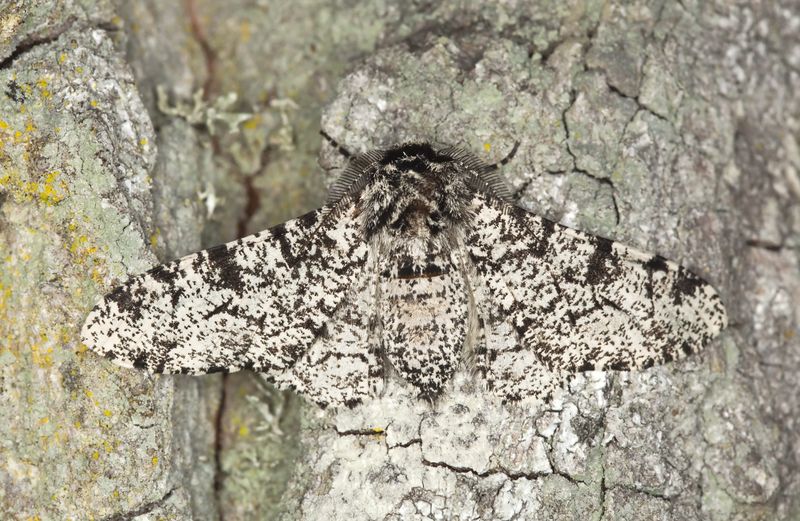
The peppered moth is a classic example of natural selection, known for its ability to blend into its environment. Native to Britain, this moth has speckled wings that perfectly mimic the appearance of lichen-covered tree bark.
This camouflage was particularly advantageous during the Industrial Revolution when pollution darkened the trees, leading to a darker variant of the moth thriving.
This adaptation allowed the peppered moth to remain hidden from predators, illustrating the dynamic relationship between organisms and their environments.
The peppered moth’s story is a compelling example of how species can rapidly adapt to changing conditions. Its camouflage not only protects it from birds and other predators but also serves as a living testament to the power of evolution.
The peppered moth continues to be a significant subject of study in understanding adaptation and survival in the natural world.
12. Gaboon Viper
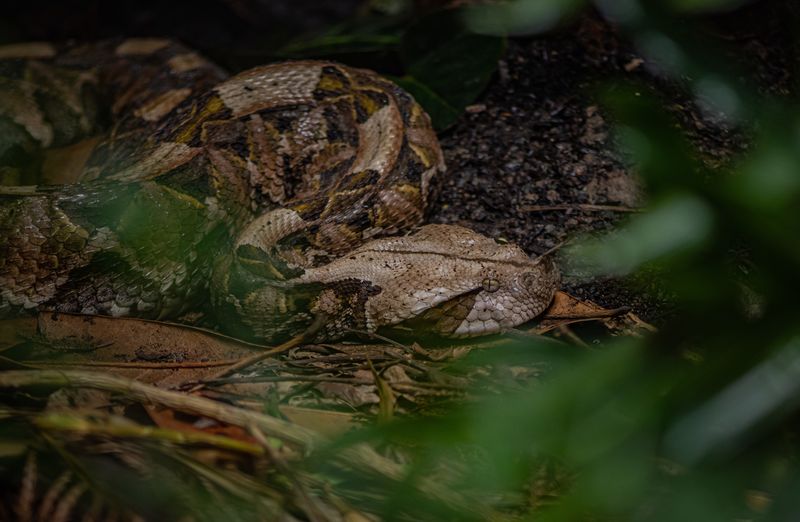
The Gaboon viper is a master of disguise, known for its incredible ability to blend into the leaf litter of African rainforests. This venomous snake has a stunning pattern of brown, yellow, and black scales that mimic the forest floor, making it almost invisible.
Its camouflage is so effective that it can lie in wait for hours, ambushing unsuspecting prey with its lightning-fast strike.
The Gaboon viper’s ability to disappear into its environment is not only a defense mechanism but also a crucial hunting strategy.
In addition to its camouflage, the Gaboon viper possesses the longest fangs of any snake, adding to its fearsome reputation.
Its ability to blend into the background highlights the intricate relationship between predator and prey, where survival often relies on remaining unseen. The Gaboon viper is a stunning example of nature’s ability to craft creatures perfectly suited to their environments.


